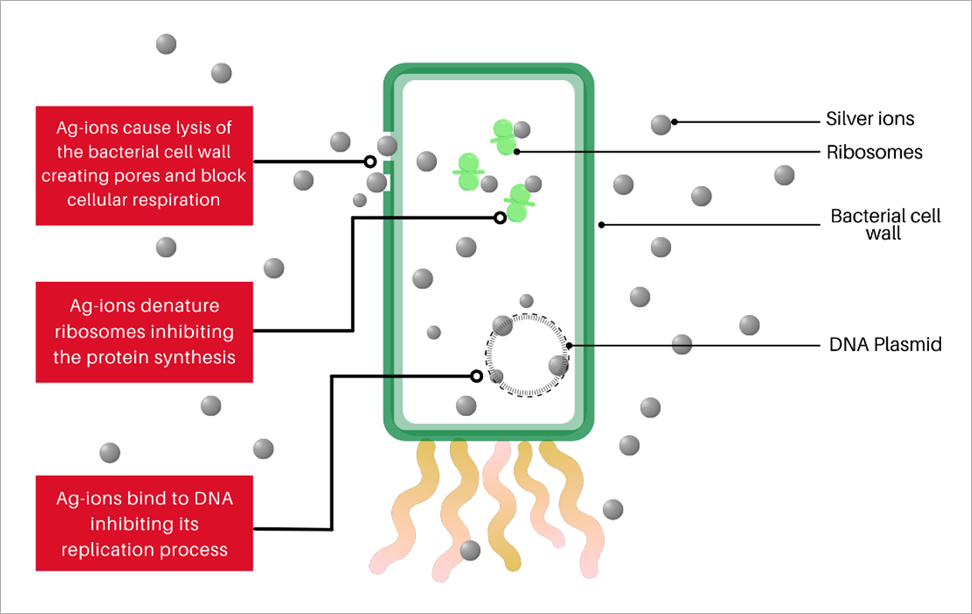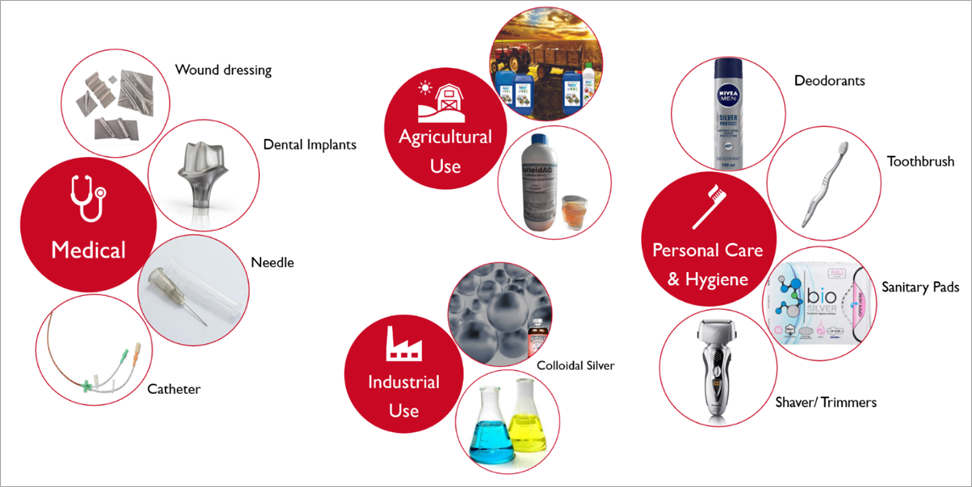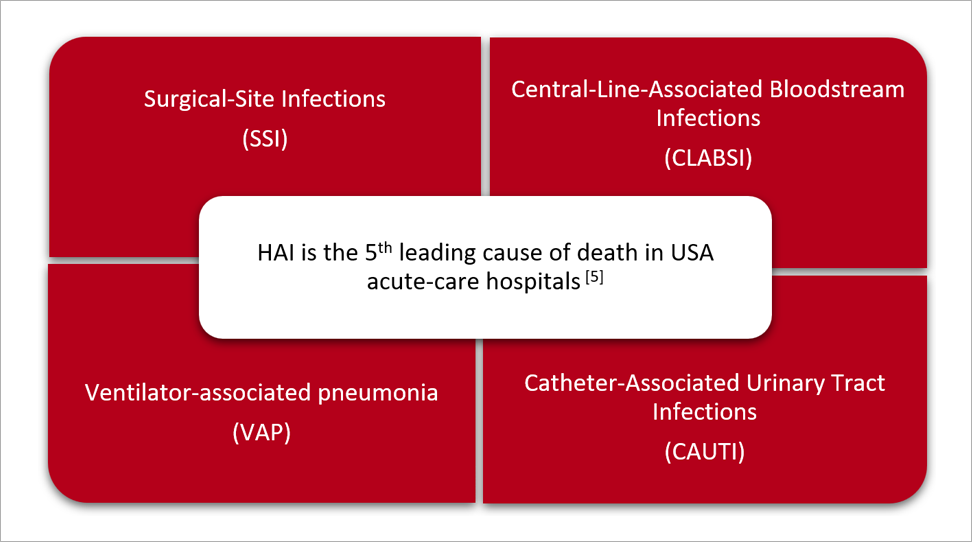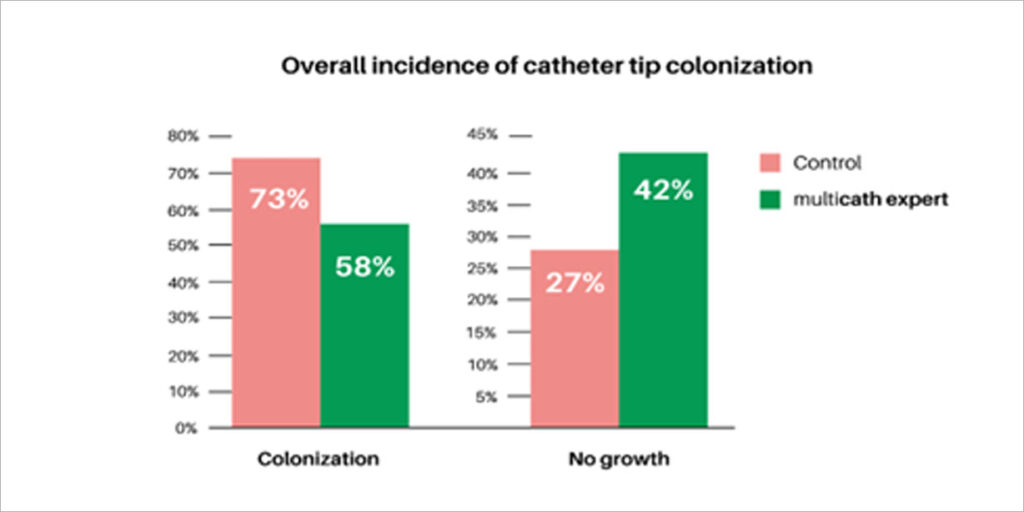Antimicrobial Silver-Ion Technology: The Silver Bullet For Infections?
Catheter-related Blood Stream Infection (CRBSI) have become a major challenge for hospitals worldwide. HAIs are the leading causes of hospital-acquired conditions and patient deaths. This article provides an overview of antimicrobial silver-ion technology and its potential role in preventing infections.
What is the Silver-ion technology?
Historically, silver ions (Ag-ions) have been used in burns and wound treatments; and food and water preservation by Greeks, Romans, and Egyptians for their antimicrobial properties. The silver atom transforms into a silver cation (Ag+) when it loses one or more electrons and attains a highly reactive state. The Ag+ easily binds to the tissue proteins of microbes, causing vital structural changes that help prevent infections.
Ag-ion antimicrobial technology is a highly versatile, patented, and innovative technology of incorporating silver ions into coatings, textiles, and polymers in a multitude of applications for controlling infections by checking colonisations, and providing sterilization against most microbes including bacteria, fungi, and viruses.
Ag-ion technology works against 150 strains of bacteria, both gram-positive and gram-negative like S.aureus, MRSA, S.epidermidis, P.aeruginosa, E.coli, K.pheumoniae, and fungi like C.albicans, and yeast.[2] Recent studies have even brought to light the antimicrobial efficacy of Ag-ion against certain viruses, like Coronavirus. (tested and published by sciessent, Feb 10, 2020).

How do silver ions attack microbes?
The silver ions have oxidizing properties, and because they are positively charged, they readily attract negatively charged microbe cells. There are three main mechanisms by which these ions can attack the microbes:
- Ag+ ions react with the peptidoglycan component of microbes’ cell wall and eat away at it, creating pores (lysis).
- Ag+ ions penetrate the bacterial cell wall and block cellular respiration, hence disrupting the metabolism of the microbe.
- Ag+ ions cause damage to the DNA of the microbe and its replication process.

Various mechanisms by which Silver ions attack a microbe cell
The ag-ions destroy the cell’s energy production, ultimately causing the cell wall to burst. This causes the microbe to die and stop growing further, thus explaining its sterilizing, disinfecting, and anti-microbial properties.
Silver exhibits remarkably low toxicity towards humans but shows maximum toxicity towards microorganisms, including antibiotic-resistant microorganisms.
What are its applications?
Medical and clinical applications of Ag-ion antimicrobial technology are widespread. Silver is usually incorporated as antimicrobial surface coatings. However, through unique inventions, this technology can be impregnated in the structural polymer of the device with zeolite (aluminosilicate) to ensure higher durability and a longer sustained release.
Vygon incorporates this patented Ag-ion technology with zeolite impregnated in bulk in the matrix of various Expert-range catheters to impart a sustained antimicrobial property.
Vygon’s Multicath Expert (multi-lumen central venous catheters), Expert Dialysis catheters, and Expert Umbilical catheters, the only antimicrobial catheter for use in NICU are some fine endorsers of this Ag-ion technology.

Silver shows effectiveness as an antimicrobial metal in a lot of application areas
What is the impact of Ag-ion technology on the medical field?
Nosocomial infections or Catheter-related Blood Stream Infection (CRBSI) are infections that are acquired by the patients during the process of receiving treatment in the hospitals that were not present during the time of admission. They may first appear 48hrs or more after hospital admission or within 30 days after receiving health care.
Every year in America alone, HAIs account for an estimated 1.7 million cases and are the cause of death for 1 in 17 people.
(as reported by the Centers for Disease Control)
At a Karouinan hospital, 256 general ICU patients (>48hr) were extensively studied for a year, where inferences identified the total incidence rate of HAIs to be 30.6%. Additionally, the mortality rate was found to be 28.7%, and the presence of gram-negative bacteria in 80% of cases.[4]

In critically ill patients, central venous catheters are the only reliable way to maintain safe, direct vascular access. However, direct vascular access poses potential risks of infection (CLABSI) by providing a pathway for microorganisms to enter the patient’s body which further increases the overall economic cost of the hospital.
But the good news is that these unsolicited infections are considered preventable threats to patient mortality and morbidity. Numerous studies have demonstrated the effectiveness of Ag-ion Antimicrobial Technology against Healthcare-Associated Infections (HAI) or Nosocomial Infections. Ag-ion coating in catheters imparts a bacteriostatic effect by suppressing microbial growth on the inner and outer surface of the catheter and consequently minimizing the risk of catheter-related sepsis.

Conclusive evidence reveals the use of silver zeolite-impregnated multicath expert CVC is superior to a non-impregnated catheter in reducing the rate of colonization.[6]
In addition to serious health risks to patients, nosocomial infections or HAIs are associated with increased resource utilization and extended hospital stays, which add to hospitals’ economic burdens.[7] To avoid these undesirable consequences, appropriate hygiene protocols and reinforcement strategies should be implemented. The Ag-ion antimicrobial technology seems to be a magical solution to this complicated problem.
References: –
[1] Ebrahiminezhad, Alireza & Raee, et al. “Ancient and Novel Forms of Silver in Medicine and Biomedicine”. Journal of Advanced Medical Sciences and Applied Technologies (2016). 2. 122-128. 10.18869/nrip.jamsat.2.1.122.
[2] Platt, N. “Silver ion technology.” Polymers Paint Colour Journal 196 (2006): 42-43.
[3] Antimicrobial Silver in Medicinal and Consumer Applications: A Patent Review of the Past Decade (2007–2017) – Scientific Figure on ResearchGate. Available from: https://www.researchgate.net/figure/Trend-analysis-of-yearly-number-of-patent-registrations-involving-antimicrobial-silver_fig4_328547894 [accessed 10 Nov 2021]
[4] Merzougui, Latifa, et al. “Nosocomial infections in the Intensive Care Unit: annual incidence rate and clinical aspects.” The Pan African Medical Journal 30 (2018): 143-143
[5] Stone, Patricia W. “Economic burden of healthcare-associated infections: an American perspective.” Expert review of pharmacoeconomics & outcomes research vol. 9,5 (2009): 417-22. doi:10.1586/erp.09.53
[6] Khare, Milind D., et al. “Reduction of catheter-related colonisation by the use of a silver zeolite-impregnated central vascular catheter in adult critical care.” Journal of Infection 54.2 (2007): 146-150.
[7] Benenson, S., Cohen, M.J., Schwartz, C. et al. Is it financially beneficial for hospitals to prevent nosocomial infections? BMC Health Serv Res 20, 653 (2020). https://doi.org/10.1186/s12913-020-05428-7








